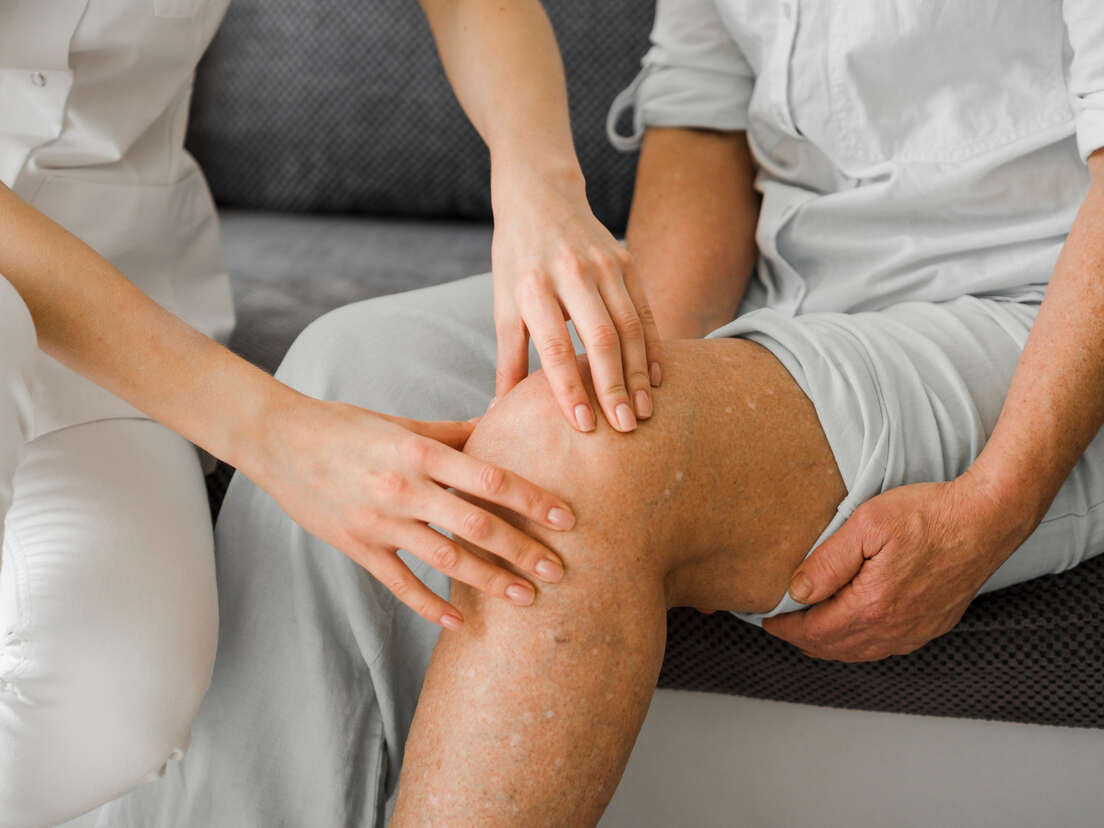Laser therapy is a type of light therapy that uses the power of focused photons in the red light spectrum. This type of laser therapy can effectively reach both deep-seated structures and tissues closer to the surface of the skin. When it comes to addressing knee pain, the use of class IV lasers in clinical treatments offers advantages and outcomes which are a go-to option for many.
The enhanced penetration of laser therapy allows for greater depth of tissue penetration, making them ideal for targeting structures that lie deeper within the body and knee region. Laser therapy for knees can be beneficial in reaching affected areas such as muscles, tendons, ligaments, and joints, providing therapeutic effects in addressing osteoarthritis.
Class IV lasers have increased strength and deeper penetration compared to other types of lasers. While class IV lasers can produce heat, our practitioners ensure that the treatment remains within a comfortable and safe range. The laser applicator is carefully moved over the skin of the knee during the treatment session. Throughout the treatment, you might experience a mild sensation of warmth, or you may not feel anything at all. Your practitioner will glide the laser applicator across the skin aiming to cover a wide area for maximum effectiveness and to disperse heat, thus minimizing any discomfort.
Class IV laser treatment is a recommended treatment option for knee-related conditions due to its therapeutic benefits. Such benefits include:
- Pain relief- class IV laser therapy can help alleviate knee pain by promoting the release of endorphins, which are natural pain-relieving chemicals produced by the body. The laser’s energy penetrates deep into the tissues, targeting inflammation and reducing pain signals.
- Inflammation reduction- knee conditions such as arthritis or injuries often involve inflammation. Class IV laser treatment can assist in reducing inflammation by enhancing blood flow and lymphatic drainage, thereby reducing swelling and improving overall knee function.
- Tissue healing and regeneration- the laser’s energy stimulates cellular metabolism, which can accelerate tissue repair and promote healing. This can be beneficial for knee injuries, strains, or post-surgical recovery by enhancing the body’s natural healing processes.
- Increased range of motion- tight muscles, joint stiffness, and limited range of motion are common issues in knee conditions. Class IV laser therapy can help relax muscles, improve joint mobility, and enhance flexibility, allowing for better movement and function of the knee joint.
Non-invasive and non-pharmaceutical approach
Class IV laser treatment offers a non-invasive alternative to surgery or pharmaceutical interventions. It is generally considered safe and well-tolerated, with minimal side effects.
Osteoarthritis of the Knee
Knee osteoarthritis, otherwise known as a degenerative joint disease, is a common form of arthritis that primarily affects the knee joint. It is a chronic condition characterized by dysfunction of the cartilage cells that cover the ends of the bones in the knee joint. In a healthy knee, the cartilage allows smooth movement of the joint and helps to protect the underlying bone. When dealing with osteoarthritis, changes to the cartilage can alter how the knee joint and surrounding structures handle load, which can sometimes result in pain and dysfunction. Inflammation, stiffness in the knee joint, and discomfort can occur and can disrupt some everyday activities. Joint changes related to osteoarthritis can be seen on imaging sequences such as x-ray but there is an overall poor correlation between these changes and symptoms that are felt; it is quite common to see these changes on imaging in a knee that is painless and well functioning.
Why does Knee Osteoarthritis occur?
As people get older, the risk of developing osteoarthritis increases. There are many factors that contribute to the development of the condition and in the vast majority of cases, it is not just one of these factors that is implicated. Repetitive stress or excessive use of the knee joint, often due to certain occupations, sports activities, or obesity, can accelerate cartilage cell dysfunction and lead to osteoarthritis. Previous knee injuries, such as ligament injuries, meniscus injuries, or fractures can increase the likelihood of developing osteoarthritis later in life. There may be a genetic predisposition to developing osteoarthritis, as certain genes can influence the integrity and stability of joint structures. Poor diet and a sedentary lifestyle with little physical activity can also contribute to an increased risk of osteoarthritis. Ultimately, osteoarthritis is quite commonly simply due to age-related joint changes and can be managed, in part, through a generally healthy lifestyle.
The symptoms of knee osteoarthritis can vary but commonly include:
- Pain, especially during movement or weight-bearing activities
- Stiffness and reduced flexibility in the knee joint, particularly after periods of inactivity
- Swelling and tenderness around the knee
- A grating or cracking sensation (crepitus) when moving the knee
- Gradual worsening of symptoms over time
Our treatments at Rebound Sport and Spine focus on managing symptoms, improving joint function, and enhancing the quality of life.
Don’t let knee pain hold you back any longer! Experience relief and improved knee health with Rebound Sport and Spine. Our team of experts specializes in addressing knee pain through advanced chiropractic techniques and personalized treatment plans. Take the first step by calling 1-778-771-3040 to schedule your appointment today. Don’t wait, reclaim your mobility and get back to doing what you love with Rebound Sport and Spine.



